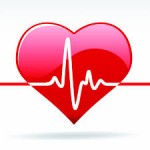Heart Disease and stroke are directly related to certain factors in life. The following risk factors can be changed through diet and exercise and lifestyle changes. 
Common risk factors for coronary heart disease and stroke that can be controlled or treated include high LDL cholesterol levels, low HDL cholesterol levels, high blood pressure, smoking, type II diabetes, physical inactivity, and being overweight or obese.
Cholesterol
High levels of LDL (bad) cholesterol contribute to the development of atherosclerosis as the cholesterol is deposited in artery walls, increasing the buildup of plaque. Low levels of HDL (good) cholesterol raise stroke risk because HDL cholesterol carries cholesterol away from the arteries and back to the liver where it is removed from the body. Cholesterol levels should be checked annually.
Blood Pressure
High blood pressure, 140/90 mm Hg or higher, causes the heart to work harder than normal. Both the heart and arteries are then more prone to injury. High blood pressure increases the risk of heart attacks, strokes, CHF (coronary heart failure), atherosclerosis and kidney failure. High blood pressure damages the inner lining of the blood vessels, which promotes the formation of atherosclerotic plaques. Over time the arteries become narrowed, hardened and less elastic, contributing even more to the high blood pressure.
African Americans are more likely to suffer from hypertension; for instance, 80 percent of African Americans over 65 have high blood pressure. As a result, they have a greater rate of nonfatal stroke, fatal stroke, heart disease death and endstage kidney disease.
High blood pressure also increases the risk of hemorrhagic stroke by weakening blood vessels. Also increasing hemorrhagic risk are arteriovenous malformations (AVM) and aneurysms, which are both vascular diseases that can be affected by high blood pressure.
Smoking
For smokers, the risk of developing coronary heart disease is two to four times higher than for nonsmokers. Smoking is also a significant risk factor for stroke. Exposure to other people’s smoke increases the risk of heart disease and stroke, even for nonsmokers. The nicotine and carbon monoxide in cigarette smoke damage the cardiovascular system in many ways.
Nicotine causes a short-term increase in blood pressure, heart rate and the flow of blood from the heart. It also causes the arteries to narrow. Carbon monoxide reduces the amount of oxygen the blood can carry. This, combined with the nicotine effects, creates an imbalance between the demand for oxygen by the cells and the amount of oxygen the blood can supply. Toxic products in cigarette smoke can damage the arterial wall, contributing to atherosclerosis. Smoking can make blood platelets stickier, which means clots are more likely to form.
Diabetes
Type II diabetes seriously increases your risk of developing cardiovascular disease. In fact, up to 75 percent of people with diabetes die of some form of heart or blood vessel disease, and their heart disease death rates are about two to four times higher than for adults without diabetes. Even when glucose levels are under control, diabetes increases your risk. If blood sugar is not well controlled, the risks are even greater. In addition, diabetes causes nerve damage that can make the pain of heart attacks harder to diagnose.
Physical Activity
A physically inactive lifestyle is a risk factor for coronary heart disease and stroke. Physical activity can help control blood cholesterol, diabetes and weight, as well as help lower blood pressure in some people.
People who have excess body fat, especially if a lot of it is in the waist area, are more likely to develop heart disease and stroke even if they have no other risk factors. Excess weight increases the heart’s work. It also raises blood pressure and blood cholesterol and triglyceride levels, and lowers “good” cholesterol levels. It can also make type II diabetes more likely to develop.
If you or a loved one has one or more of the mentioned risk factors, action should be taken. It is never too late to change your lifestyle and improve upon your health.






Leave a Reply